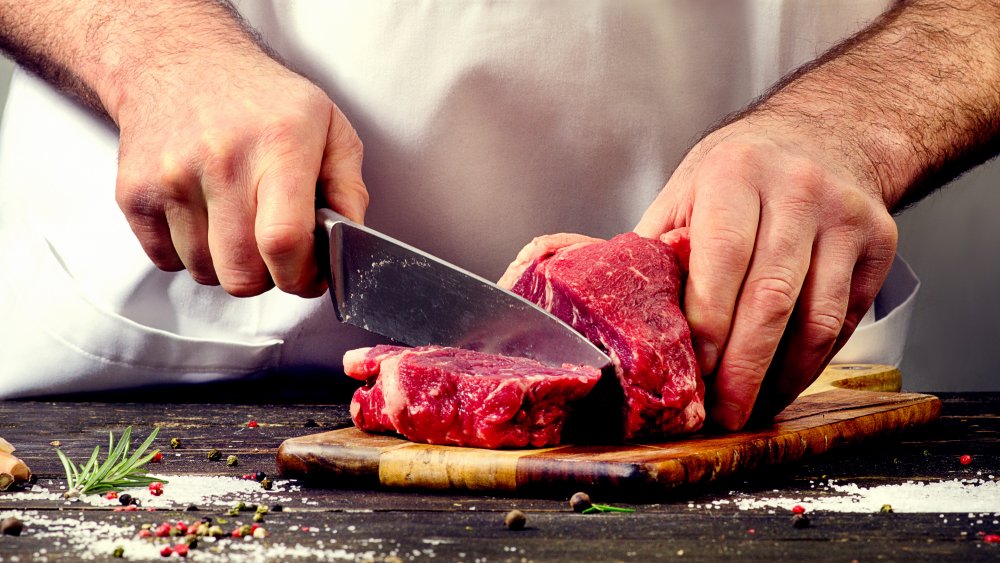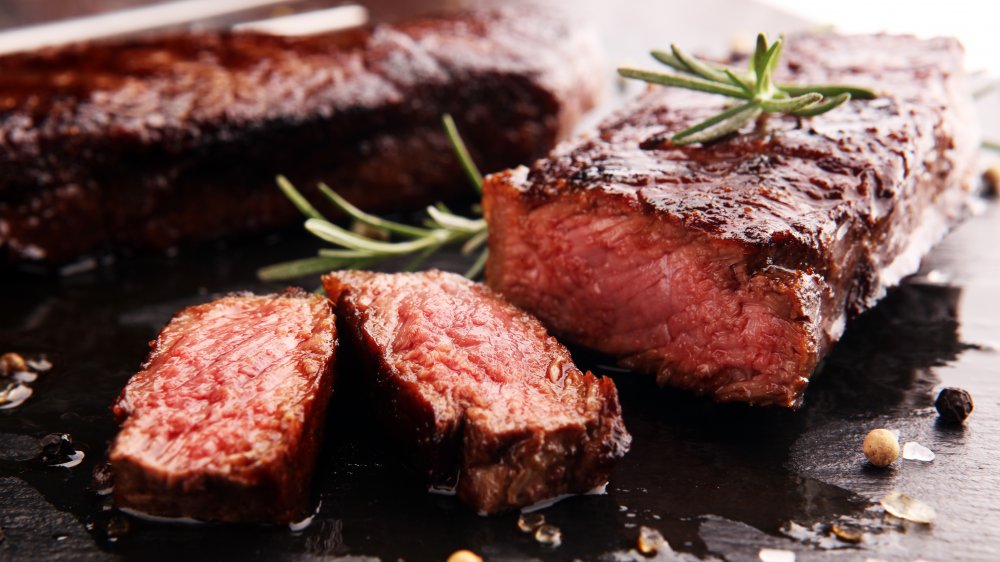The First Step To Cooking Great Steak Isn't What You Think
Most of us could write a book about all the things that could go wrong when we're grilling a piece of steak, but few of us know how to get it right, and a Michelin starred chef says that process begins even before we lay the meat on the grill.
Hilary Henderson tells Robb Report that a great steak begins with a high-quality cut of meat, and that means knowing what you like and how much you might be willing to pay for it. "Learning what you like is probably the most important [element] when it comes to choosing the right cut. And then find the best that you can afford. It doesn't always have to be Wagyu," she says.
From there, she says it's important to get to know a good, reputable meat supplier, which could mean going to your local butcher and asking questions. Plenty of them. Because experienced butchers are around meat all the time, you can ask about specials, what the butchers themselves might buy and how they might prepare their meats, and when a fresh shipment might be coming in. Being at the head of the line when it comes to picking choice cuts is one of the key reasons why steakhouse steaks almost always taste better than the steaks you grill at home.
A good steak begins with sourcing a good cut of beef
In his post on top steak buying tips, The Reluctant Gourmet writes: "My own local butchers tell me that customers don't take advantage of their knowledge and experience. They come in with their own preconceived ideas of what a good steak should look like and end up buying an inferior product." That's sad because "A good steak is expensive so why not ask the expert who handles the products every day what they think is a good bargain. You may be surprised by getting better cuts for less money."
It doesn't pay to go into your grocery meat section without carrying out any due diligence because as The Spruce Eats puts it, just because a steak says its "Great for Grilling!" doesn't mean it actually is. It says meat producers have found that cutting up beef in different ways has allowed them to resell what would have been sold as stew meat or ground beef as "steak," which means your dining experience could be nothing like you expected. The best steak cuts continue to be rib eye, New York strip, tenderloin, T-bone, and Porterhouse.
When she's out steak shopping, Henderson herself looks out for grass-fed sirloins with plenty of marbling as well as a deep red color, which indicates that you're looking at a cut of prime beef. She also speaks to the butcher before making a purchase, which is why you might want to do the same.

